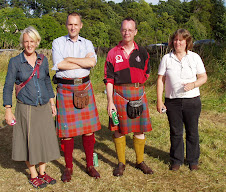I mean to walk up into central Edinburgh a bit later this morning, to see the Pope ride by in his Popemobile. If the crowds are intolerable, I’ll just come home again (like the Grand Old Duke of York) – I have no intention of climbing a sycamore tree. Even so, it will be interesting to see the numbers and mood of the people who are there.
The Pope (the old boy must be airborne as I write) will be in progress between Holyrood, where he will have been saying howdy do to the Queen, and Morningside, where he will have lunch with our local Cardinal Archbishop. I imagine that will be a low-key affair – rest stops have been built in to the itinerary, given the Pope’s age, and I suspect that is one of them. What would I give him for lunch, if I were the Cardinal’s housekeeper? I think I’d stick with Jamie Oliver’s tray-baked salmon with green beans, olives, anchovies & tomatoes.
As I composed myself for sleep on Sunday evening in London, thinking of various aspects of the following day’s journey to Edinburgh, it was pleasant to reflect that the Pope himself, way off there in Rome, was lying down with not entirely dissimilar thoughts.
Starmore
To begin with, read Shandy’s account of her Starmore class the day before mine.
And thank you, Shandy, for the reference to Starmore’s “Aran Knitting” which I have been re-perusing. In it, she specifically claims priority for unventing Celtic knitting – “Until its publication [“The Celtic Collection”, 1992] infinite Celtic cabling was not seen in knitting.” She said something of the sort in our lesson.
Lavold’s copyright is 1998 for "Viking Patterns for Knitting". She says something in the introduction about 15 years of toying with and working on the idea. As you say, Shandy, there was a lot of that sort of thing around at that time. Starmore clearly got into print first. There is no bibliography in Lavold, and no reference to Starmore that I can see.
Alice’s book – for those new to the subject – is a collection of sweater patterns, some of which have infinite Celtic cabling on them. Lavold’s book has some sweater patterns – good ones – and a lot more swatches and charts. She mentions in her introduction the identity of many Celtic interlaced patterns with Viking ones, and seems to imply that she thinks the Vikings may have picked up the idea from the Celts.
What is the source for your glorious throw, Shandy? I could scroll back and remind myself – I’ve admired it before.
I had thought already (before yesterday’s comments) that I must now have a go at the Lavold technique for starting a Celtic knot. She was very excited about having unvented it. I strongly suspect that you’re right, Maureen, and there isn’t much difference between the two. I feel sure, incidentally, that Lavold was working independently of Starmore, quite likely without any knowledge of “The Celtic Collection”, especially given the difference of language.
Thursday, September 16, 2010
Subscribe to:
Post Comments (Atom)



Brave of you to venture out into the foot traffic!
ReplyDeleteUnrelated to the Pope or knitting, I was recently having a conversation with a friend about the Duke of York game we played as children, and wondered about its source. Folks here in MN never heard of it. I found nothing but the words on the internet. Since you are another NJ person, it struck me. Hope you are not left either up or down down down down.
ReplyDeleteInteresting that you should use the EZ word "unvent" for the increasing and decreasing manoeuvres on the knots. In "Aran Knitting", and at the class, she made it clear that no one had used this before she did in 1992. I only have the cul-de sac vest pattern in "Knitter's" Fall 2003, and it looks to me as though those knots start with lifted increases and finish with ordinary decreases - quite a different technique. My throw uses knots from her pattern Cromarty, from "The Celtic Collection," and I think she is a genius - as is Lavold.
ReplyDelete